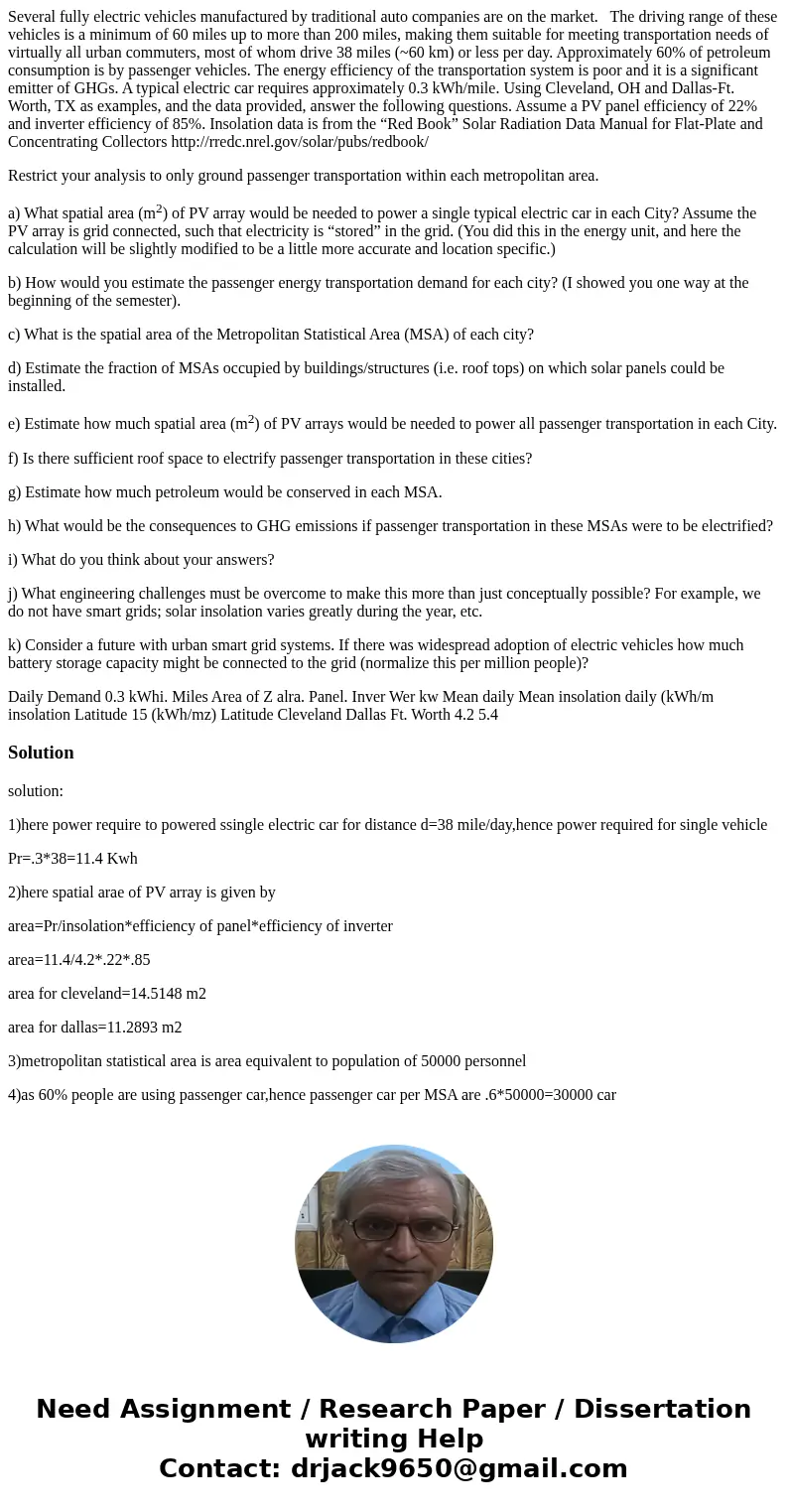Several fully electric vehicles manufactured by traditional
Several fully electric vehicles manufactured by traditional auto companies are on the market. The driving range of these vehicles is a minimum of 60 miles up to more than 200 miles, making them suitable for meeting transportation needs of virtually all urban commuters, most of whom drive 38 miles (~60 km) or less per day. Approximately 60% of petroleum consumption is by passenger vehicles. The energy efficiency of the transportation system is poor and it is a significant emitter of GHGs. A typical electric car requires approximately 0.3 kWh/mile. Using Cleveland, OH and Dallas-Ft. Worth, TX as examples, and the data provided, answer the following questions. Assume a PV panel efficiency of 22% and inverter efficiency of 85%. Insolation data is from the “Red Book” Solar Radiation Data Manual for Flat-Plate and Concentrating Collectors http://rredc.nrel.gov/solar/pubs/redbook/
Restrict your analysis to only ground passenger transportation within each metropolitan area.
a) What spatial area (m2) of PV array would be needed to power a single typical electric car in each City? Assume the PV array is grid connected, such that electricity is “stored” in the grid. (You did this in the energy unit, and here the calculation will be slightly modified to be a little more accurate and location specific.)
b) How would you estimate the passenger energy transportation demand for each city? (I showed you one way at the beginning of the semester).
c) What is the spatial area of the Metropolitan Statistical Area (MSA) of each city?
d) Estimate the fraction of MSAs occupied by buildings/structures (i.e. roof tops) on which solar panels could be installed.
e) Estimate how much spatial area (m2) of PV arrays would be needed to power all passenger transportation in each City.
f) Is there sufficient roof space to electrify passenger transportation in these cities?
g) Estimate how much petroleum would be conserved in each MSA.
h) What would be the consequences to GHG emissions if passenger transportation in these MSAs were to be electrified?
i) What do you think about your answers?
j) What engineering challenges must be overcome to make this more than just conceptually possible? For example, we do not have smart grids; solar insolation varies greatly during the year, etc.
k) Consider a future with urban smart grid systems. If there was widespread adoption of electric vehicles how much battery storage capacity might be connected to the grid (normalize this per million people)?
Daily Demand 0.3 kWhi. Miles Area of Z alra. Panel. Inver Wer kw Mean daily Mean insolation daily (kWh/m insolation Latitude 15 (kWh/mz) Latitude Cleveland Dallas Ft. Worth 4.2 5.4Solution
solution:
1)here power require to powered ssingle electric car for distance d=38 mile/day,hence power required for single vehicle
Pr=.3*38=11.4 Kwh
2)here spatial arae of PV array is given by
area=Pr/insolation*efficiency of panel*efficiency of inverter
area=11.4/4.2*.22*.85
area for cleveland=14.5148 m2
area for dallas=11.2893 m2
3)metropolitan statistical area is area equivalent to population of 50000 personnel
4)as 60% people are using passenger car,hence passenger car per MSA are .6*50000=30000 car
5)power required to run this much car is
Prs=30000*11.4=342000 KWh
6)spatial area of sonal panel is
areas for cleveland=342000/4.2*.22*.85=435446.906 m2
area for dallas=338680.9269 m2
as this area is equivalent to square of .659*.659 km2 for cleveland and .581*.581 km2 for dallas hence it is possible to provide PV array on building top to provide power to all passenger car but efficiency has to improved for solar panel.
7)as solar panel are kept panel hence they will absorb all diffused radiation but direct radiation will moves away hence we need to inclined panel at angle of latitude toward south to gather maximum insolation but it will again increase area required in city .


 Homework Sourse
Homework Sourse